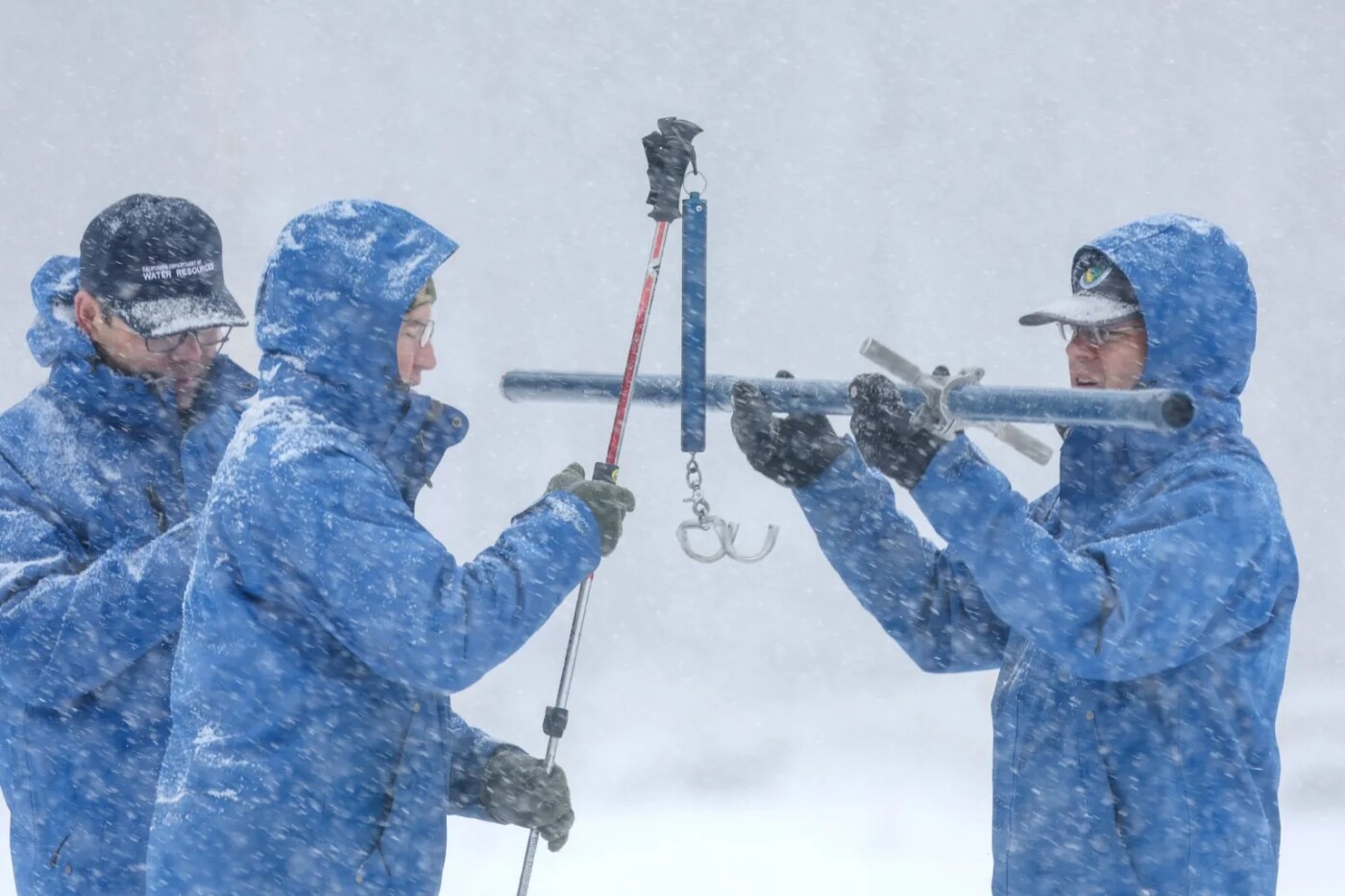Snowpack in the Sierra Nevada, which supplies about one-third of California’s water needs, was far lower than average for the end of January at one of the state’s measurement points Friday.
The results from Phillips Station, in El Dorado County, were presented at a news conference where the director of the Department of Water Resources also rebutted President Donald Trump’s assertion that the U.S. military had turned on unspecified water pumps that he said would deliver more water to California.
Snowpack measurements in the second manual survey of the winter season showed 22.5 inches of snowpack, which is a water equivalent of 8 inches.
That’s 46% of average levels on Jan. 31 for Phillips Station, a key measurement point near Echo Summit, south of Lake Tahoe, at an elevation of 6,800 feet.
It’s drastically less snowpack than indicated on Jan. 1, when the level was 110% of average for that time of year, following a series of storms that moved through the region in November and December.
The snowpack that accumulates during the wet season is critical for the state’s water system when it melts in the spring. Measurements at 130 points throughout the year help the state estimate how much water will be available and how to manage it.
The snowpack is measured at several locations, so average levels can vary.
Statewide, the snowpack is at about 65% of average for this time of year, down from 108% of average on Jan. 1. The snow water equivalent was 10.5 inches on Jan. 31.
A ‘bone-dry’ January
“We had a fairly wet December into a bone-dry January,” Water Resources Director Karla Nemeth said.
While the state is ahead of the curve heading into the winter, prolonged dry conditions like those seen in January can change the long-term calculus fast, she said in a statement.
“For each day it’s not snowing or raining, we are not keeping up with what we need,” Nemeth said.
As for the president’s statement that the military turned on pumps last Monday, Nemeth said that state water officials were “perplexed” by the claim. She speculated that Trump may have been referring to two dams operated by the U.S. Army Corps of Engineers at Success Lake and Lake Kaweah, in Tulare County.

A spokesperson for the Corps’ Sacramento District, Tyler Stalker, confirmed the Army is conducting controlled water releases from those reservoirs, but said they started Thursday, three days after the president’s statement.
Gene Pawlik, a spokesperson for the Army Corps of Engineers in Washington, confirmed the water releases but could not explain how the water would reach Southern California, how such water transfers were being made without coordination with state water officials, or how fire departments could potentially utilize it for fighting fires.
The White House did not respond to a request for comment.
In an average year, the snowpack in the Sierras provides about 30% of the state’s water supply, maintained and transported through the California State Water Project, a 705-mile-long network of pipelines, canals, reservoirs, dams and pumps that sends water throughout the state.
The next snowpack survey is tentatively scheduled for Feb. 28.
The post Sierra snowpack drastically below normal — and no one’s turning on the pumps, DWR says appeared first on Local News Matters.
